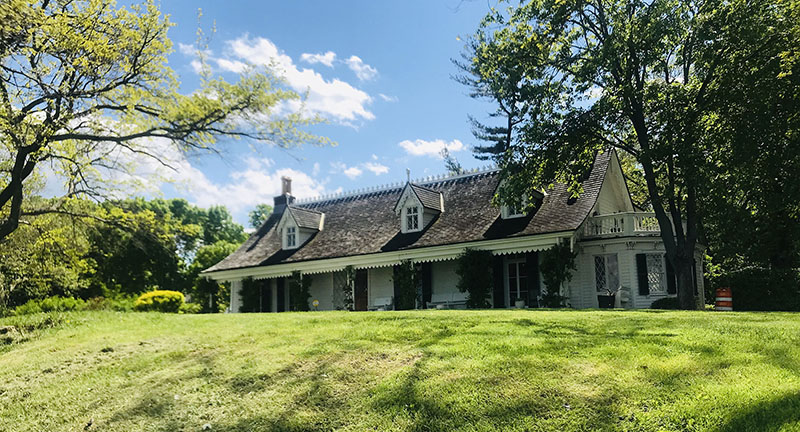
The Alice Austin House and grounds.
In 1866 Alice Austen, one of the first women photographers in America, was born in a house on Staten Island, New York. She grew up there with her grandfather, her aunt, and her extended family. For 30 years as an adult she lived and worked there with her partner Gertrude Tate. The house is now a newly re-opened museum, dedicated to her life and work, and has recently been designated as one of the few LGBT Historic Landmark sites and live and work homes.
Nadia Coen, founder of Coen Projekts, re-imagined and re-designed the Alice Austen House and told Jane Applegate the story of her involvement:
About five years ago, I met Janice Monger, the former director of the Alice Austen House, when she was working at the Brooklyn Historical Society. A year later, when Janice became the director of the Alice Austen House, she invited me to look at the museum with an eye toward re-designing it. I was struck by how interesting Alice Austen’s work was, but at the time, the museum did not reflect the true scope of her personal life and photographic work.Below Nadia describes some of the highlights of the museum.
Intrigued, I worked pro bono on a preliminary interpretive concept that was submitted for a National Endowment of the Humanities grant, with included an in-depth scholarly research by the team of five prominent scholars—Lillian Faderman, Sarah Gillespie, Richard Meyer, Lara Vapnek, and Laura Wexler. This scholarly approach served as the initial guide of reframing the museum’s interpretation of Alice Austen’s life, work, and home.The Alice Austen House received a portion of the NEH grant, which was a significant achievement for a small museum.
In 2018, Victoria Munro, the current director, replaced Janice when Janice moved to the Staten Island Museum. Victoria and I formed an immediate kinship in aesthetic, content, and design goals. With this deep dialogue and ability to fine-tune the interpretation, Victoria made it possible for my new design concept and development to be realized.
I was fascinated and excited to truthfully represent and visualize all aspects of Alice Austen’s story through a powerful environmental expression and interpretive experience. There were factors to bring to light: her multi-faceted life as one of the first female photographers in America within the Victorian Age, her personal life as a pioneer in the feminist movement who was devoted to her long-time partner, Gertrude Tate, and active in New York’s early LGBT community.
Interpreting and visualizing these multiple stories environmentally and experientially within the historic landmarked house was a complex task. Doing so needed to remain faithful to the house as a historic landmark, yet it also needed a fresh angle to direct a range of a visitor experiences within the new unfolding storyline.
The new narratives are now in distinct areas of the house and every visualization is through the lens of Alice Austen’s eye, by using her photography throughout the museum. There is an interaction of architecture, material, and mediums: large scale wall-scapes on metallic surfaces, echoing the visual quality of early photography, layered glass interpretive panels, and media experiences set within Victorian frames.
All of these design elements are integrated into the architecture of the landmark house: a visual juxtaposition of period rooms, wall paper, frames, and clean modernistic furnishings and substrates.
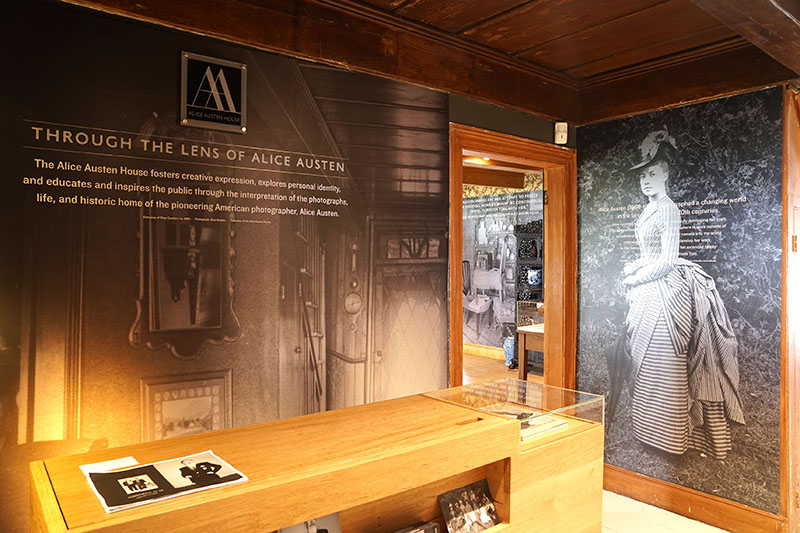
Entrance
The vestibule entrance of the house welcomes the visitors with life size imagery integrated into the full scale and width of the walls. In this particular image we see a classic portrait of Alice Austen as a young woman, with interpretive text placing her in the historical context of having received her first camera at 11 years old. The identity+mission wall also documents the history of this part of the house and immerses the visitor into the beginning of their experience in this Victorian home.
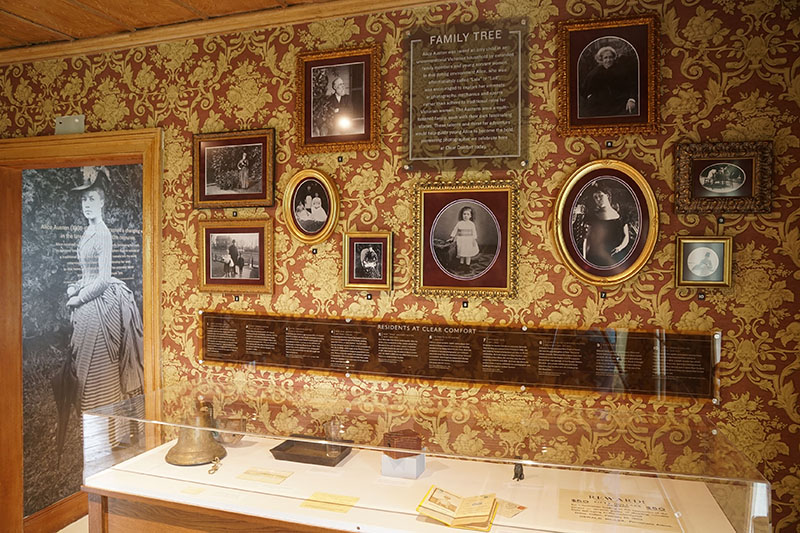
The Grand Parlor
The Family Tree wall is an inclusive interpretation showing Alice Austen's family members as well as other individuals who lived in the house that were significant to her. The wall includes her long term partner Gertrude Tate, the maids that took care of the house, and even her two pugs. The vitrine hold curious artifacts from the Alice Austen collection related to each member depicted.
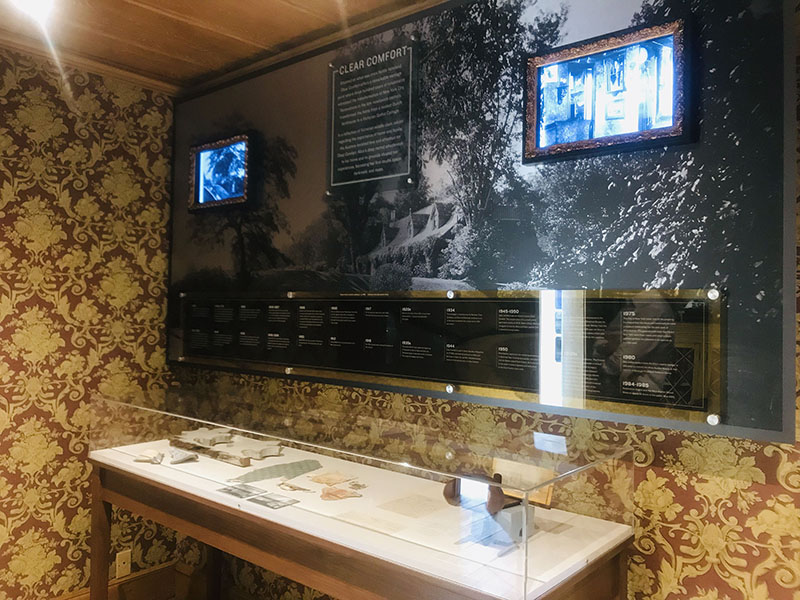
Clear Comfort
This wall is dedicated to historical facts of the landmark house and includes a full timeline dating back to when it was first built in 1659. The two media screens, embedded in Victorian frames, show the house through time: one devoted to the exterior of the house and one to the interior. These separately timed media experience loop through fascinating photographs of the house that Alice Austen herself photographed. The vitrine hold significant relics and artifacts from the Alice Austen collection.
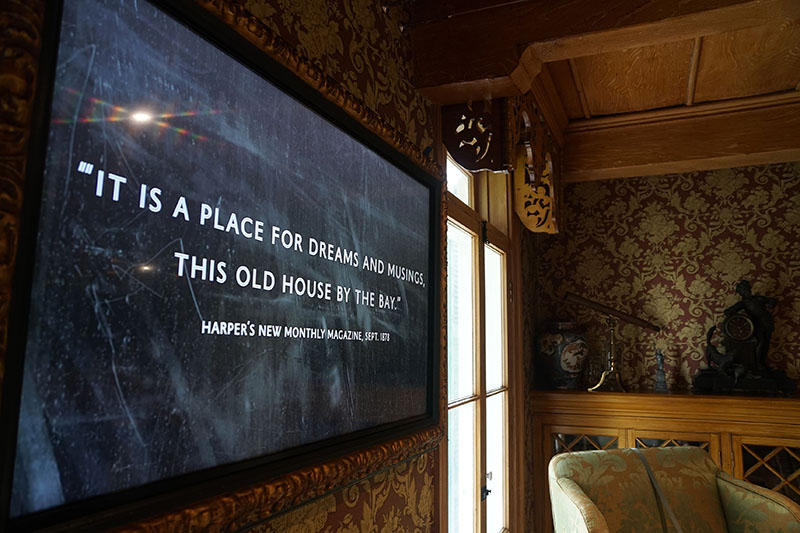
The Harbor Front
This media piece is situated on a wall where the visitor can see the waterfront. At first this appears to be a static image in a Victorian frame, but then slowly morphs into a series of Austen’s photography of the harbor front ships. The animated transitions between each photograph simulate the development process of emulsion on glass plates. Subtle harbor sounds enhance this media experience.
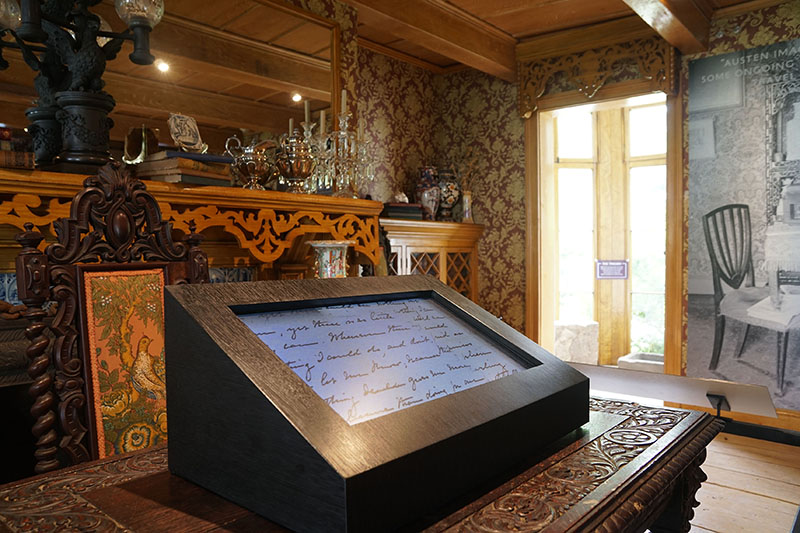
The Letters
This display animates correspondence and letters between Alice and her significant other and close friends.
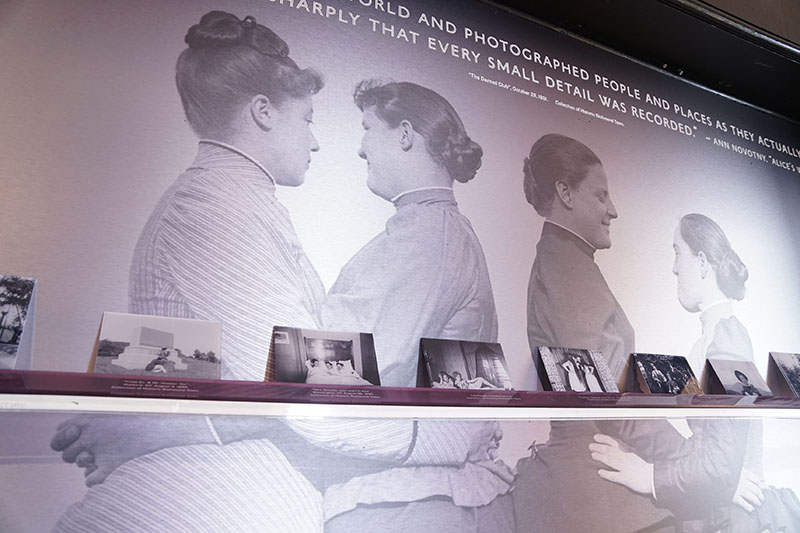
Larky Life
The “Larky Life”, shows an intimate glimpse into the social circle of young Victorian women, and exposes Alice Austen's previously unknown photographs of other women. In these private images, Alice seems to mock the accepted conventions of Victorian life. The visual contrast of the large and bold image on metal and the series of the small images invites the visitor to an intimate experience.
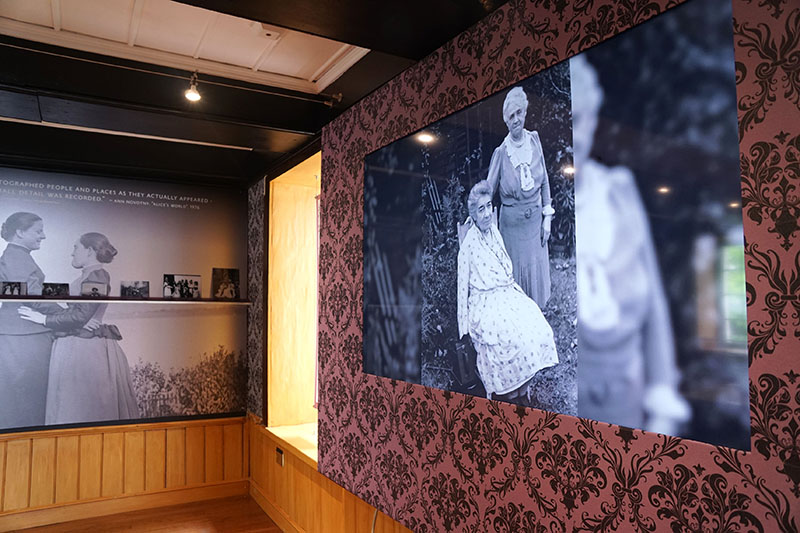
Alice and Gertrude
This media piece is inlayed in a mauve wallpaper wall—the accent color nodding to the long term relationship between Alice and Gertrude. Chronicled through all of Alice’s photographs of her partner, Getrude, this assemblage loops ethereally through their life together for 53 years from 1899, and pays homage and honors their relationship in a tender and celebratory way.
(Fabrication and installation by Duggal Visual Solutions)
